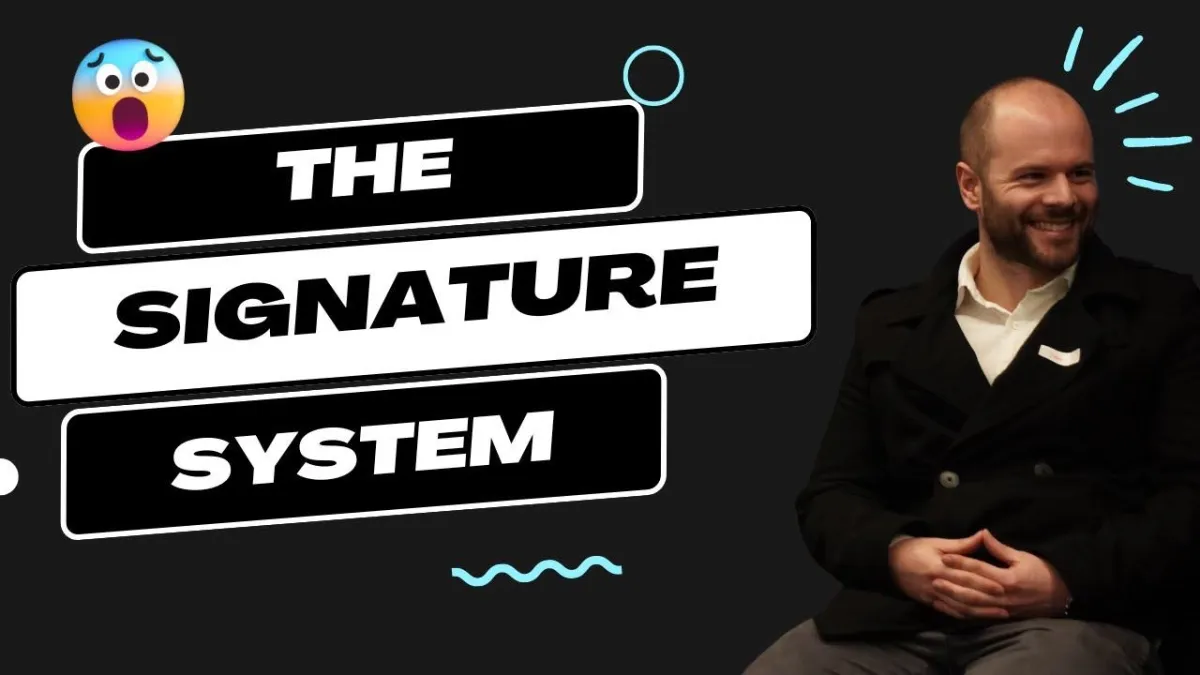
The Signature System Workshop
The Influenced Buying Journey
In today's rapidly evolving business landscape, the way buyers make purchasing decisions has undergone a significant transformation. This change necessitates a shift in sales strategies to avoid wasting time and money. In this blog post, we'll explore a signature system to efficiently scale your sales team and build an "influenced buying journey" that resonates with modern buyers.
To watch the training head here otherwise continue reading:
Understanding the Changing Buyer
The days of relying on persuasive sales tactics and aggressive selling are over. Today's buyers are well-informed, conduct independent research, and expect companies to provide value upfront. They rely on their networks and online communities for recommendations and insights. Businesses that fail to adapt to this shift often experience declining conversion rates, rising customer acquisition costs, and shrinking profit margins.
The Flawed Sales Model
Many businesses still operate on outdated sales models that assume all leads are equal. This approach leads to misaligned KPIs, departmental friction, and scaling chaos. Marketing teams prioritize quantity over quality, sales teams struggle with unqualified prospects, and customer success teams grapple with dissatisfied clients.
The Importance of the Right Data
The foundation of an effective sales strategy lies in accurate data modeling. It's crucial to understand where your highest-quality buying journeys originate and track key metrics like pipeline velocity, lead conversion rates, and return on time invested. By analyzing your funnel and dissecting your pipeline sources, you can identify opportunities for optimization and focus your efforts on the most profitable channels.
Introducing the Influenced Buying Journey
The influenced buying journey is a customer-centric approach that focuses on helping buyers make informed decisions. It involves six stages:
Hero Offer: This is an entry point for potential customers, offering valuable insights and demonstrating your expertise.
Meeting Booked: Qualified prospects move to this stage, where they engage in further conversations with your sales team.
Transition Bridge: This stage provides clarity on your services and pricing, allowing prospects to self-qualify and decide if they're a good fit.
Discovery Meeting: You delve deeper into the prospect's needs and challenges during this stage.
Next Meeting Booked: If there's a potential fit, another meeting is scheduled to explore potential solutions.
Sales Meeting: This is the final stage where you present your solution and close the deal.
Optimizing for High-Intent Revenue Opportunities (HIRO)
To scale efficiently, it's essential to prioritize high-intent revenue opportunities (HIRO). These are prospects who have reached a stage in your sales process where they are most likely to convert. By understanding your buyer's journey and identifying HIROs, you can focus your sales efforts on the most promising leads and achieve higher conversion rates.
Conclusion
Scaling a sales team efficiently requires a shift in mindset and a focus on building an influenced buying journey that aligns with the modern buyer's expectations. By implementing the strategies discussed in this blog post, you can optimize your sales process, improve customer acquisition, and achieve sustainable growth.
If you have any questions about implementing the Influenced Buying Journey or optimizing for HIRO, leave a comment below!